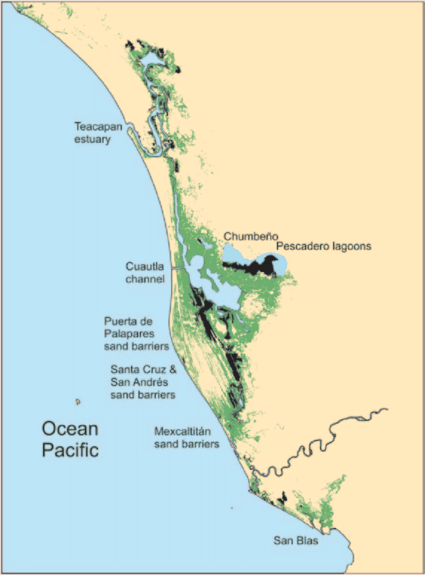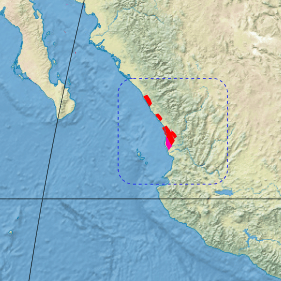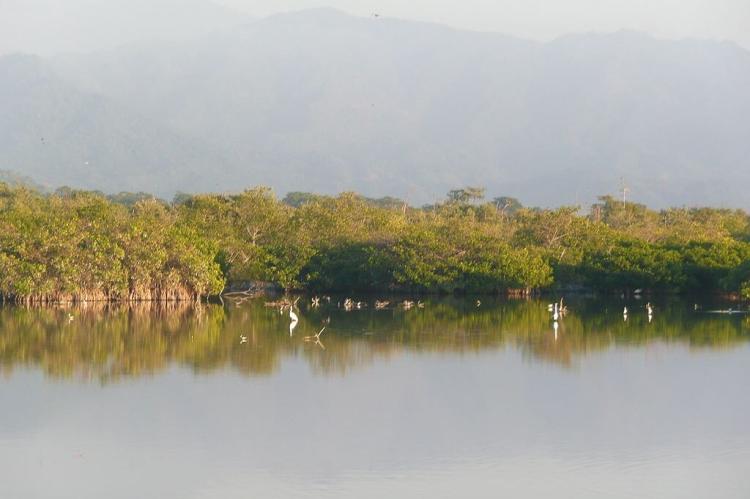Marismas Nacionales Lagoon System: Marismas Nacionales–San Blas Mangrove Ecoregion (Mexico)
The Marismas Nacionales Lagoon System is a significant coastal wetland located on the Pacific coast of northwest Mexico and a substantial and crucial mangrove ecosystem. The Marismas Nacionales–San Blas mangrove ecoregion is renowned for its rich biodiversity and ecological significance.
Marismas Nacionales Lagoon System
The Marismas Nacionales Lagoon System is a significant coastal wetland located on the Pacific coast of northwest Mexico, spanning across the states of Sinaloa and Nayarit. It is one of the country's most substantial and crucial mangrove ecosystems, covering an area of approximately 130,000 ha (320,000 acres).
This lagoon system is characterized by its diverse and dynamic wetland habitats, including estuaries, marshes, mangroves, and coastal lagoons.
The mangroves in the Marismas Nacionales Lagoon System are particularly noteworthy, with their distinctive stilt-like root systems, called pneumatophores, rising above the water's surface. These root systems enable mangroves to thrive in saline and freshwater environments, providing a vital buffer against coastal erosion and storm surges.
The Marismas Nacionales Lagoon System is renowned for its rich biodiversity, serving as a critical breeding and nesting ground for numerous bird species. The wetland is a favored stopover site during the annual migration of birds from North America, making it a bustling hub of avian activity.
The ecoregion's avian inhabitants include herons, egrets, spoonbills, and the range-restricted Mangrove Warbler, which finds its nesting home among the mangrove foliage.
This coastal wetland system also supports a wealth of marine life, with the mangroves serving as essential nurseries for various fish and crustacean species. The ecoregion's ecological symbiosis extends to its halophytic flora, contributing to soil stabilization and nutrient recycling.
The Marismas Nacionales Lagoon System holds ecological significance beyond its rich biodiversity. It acts as a natural filter, purifying water runoff and promoting water quality in the marine environment. Additionally, mangroves play a crucial role in mitigating the impacts of climate change by sequestering significant amounts of carbon dioxide.
Conservation efforts are in place to protect the Marismas Nacionales Lagoon System and its delicate ecosystems. Local communities, researchers, and environmental organizations collaborate to safeguard this critical coastal wetland from threats such as habitat loss, pollution, and unsustainable fishing practices.
Overall, the Marismas Nacionales Lagoon System is a biological treasure that exemplifies the importance of wetlands in supporting biodiversity, ecological balance, and environmental sustainability in Mexico's coastal regions.

Toponomic map of Marismas Nacionales in Mexico
Marismas Nacionales–San Blas Mangroves
Spanning across the Mexican states of Sinaloa and Nayarit, the Marismas Nacionales–San Blas mangrove ecoregion is renowned for its rich biodiversity and ecological significance. It is the largest area of mangroves on Mexico's Pacific coast, occupying a space of approximately 2,000 sq km (770 sq mi).
The heart of the Marismas Nacionales–San Blas mangrove ecoregion lies in its expansive mangrove forests. Mangroves, with their distinctive stilt-like roots that rise above the water, play a vital role in stabilizing the coastline and acting as a natural barrier against coastal erosion and storm surges. These root systems, known as pneumatophores, provide mangroves with the unique ability to survive in saline and freshwater environments.
In addition, the mangroves serve as invaluable nurseries for various marine species. Their labyrinthine roots create intricate habitats for fish, crustaceans, and other aquatic creatures. This vital breeding and nesting ground supports a diverse array of marine life, contributing to the overall ecological balance of the region.
Biodiversity
The Marismas Nacionales–San Blas mangrove ecoregion is an avian haven, drawing an impressive array of birds from across the globe. It serves as a crucial stopover point for migratory birds during their annual journey from North America to Mexico and beyond, including herons, egrets, and spoonbills.
The mangroves are home to over 250 species of birds, 40% of which are migratory. The ecoregion's avian inhabitants include the iconic Mangrove Warbler, whose limited range highlights the ecoregion's role in conserving threatened species.
The diverse birdlife in this wetland contributes to the area's reputation as a crucial breeding and nesting ground, making it a destination of unparalleled ornithological interest.
Some of the many representative avifauna are black-bellied tree duck (Dendrocygna autumnalis), great blue heron (Ardea herodias), roseate spoonbill (Ajaia ajaja), snowy egret (Egretta thula), sanderling (Calidris alba), American kestrel (Falco sparverius), blue-winged teal (Anas discors), northern jacana (Jacana spinosa), elegant trogan (Trogan ambiguus), summer tanager (Piranga rubra), white-tailed hawk (Buteo albicaudatus), merlin (Falco columbarius), plain-capped starthroat (Heliomaster constantii), painted bunting (Passerina ciris), and wood stork (Mycteria americana).
Ecological Symbiosis
An intricate web of ecological symbiosis lies at the Marismas Nacionales–San Blas Mangroves ecoregion. The lush mangrove forests, with their interwoven roots and protective canopies, provide a haven for various terrestrial and aquatic species.
The mangroves support marine life and contribute to the ecoregion's overall health by acting as carbon sinks, mitigating the impacts of climate change.
Additionally, the coastal lagoons and estuaries within the ecoregion serve as vital feeding grounds for fish and aquatic organisms, supporting the local fishing communities and contributing to the region's economic prosperity. The ecoregion's unique halophytic flora is vital in stabilizing the soil and maintaining the ecological balance in the wetland.
Conservation Challenges
Like any thriving ecosystem, the Marismas Nacionales–San Blas Mangroves ecoregion faces significant conservation challenges. Habitat loss, climate change, and pollution threaten this precious habitat and its inhabitants.

Map depicting the location of the Marismas Nacionales–San Blas mangroves (in red)
